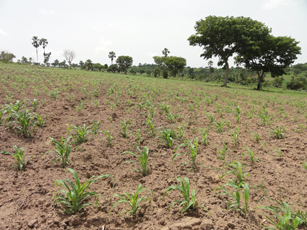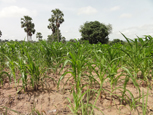Given limited land and water resources available for crop production, and population to increase by a factor 2.6 by 2050, ensuring food security in sub-Saharan Africa in a sustainable manner is one of the future important challenges. It depends on our ability to increase current crop yields on existing farmland through sustainable intensification, thus protecting carbon-rich and biodiverse rainforests, wetlands, and grasslands and avoiding increases in agricultural emissions such as greenhouse gasses (GHGs).
Agricultural area expansion and agricultural intensification in Sub Saharan Africa (SSA) are expected to cause substantial increases in agricultural GHG emissions over the next decades. The current project explores ways to substantially improve food productivity in SSA (Ethiopia, Kenya and Tanzania) without corresponding increases in emission intensities of GHGs and nutrients to the environment. We translate yield gaps into nutrient gaps. As smart nutrient management is key, we formulate promising options for managing nutrient gaps, based on the ‘4Rs nutrient stewardship’ approach in fertilization taking location specific conditions into account. Trade-off analysis of environmental and farm economic objectives at farm level and upscaling of detailed work at farm level are important components of the project.




The Crop Nutrient Gaps project (full title: Bringing Climate Smart Agriculture practices to scale: assessing their contributions to narrow nutrient and yield gaps) is funded by CGIAR-CCAFS (Climate Change, Agriculture and Food Security), Wageningen University & Research, the International Fertilizer Association (IFA) and Yara (in-kind), and also collaborates with CIMMYT and University of Nebraska-Lincoln. It runs from 2016-2019.